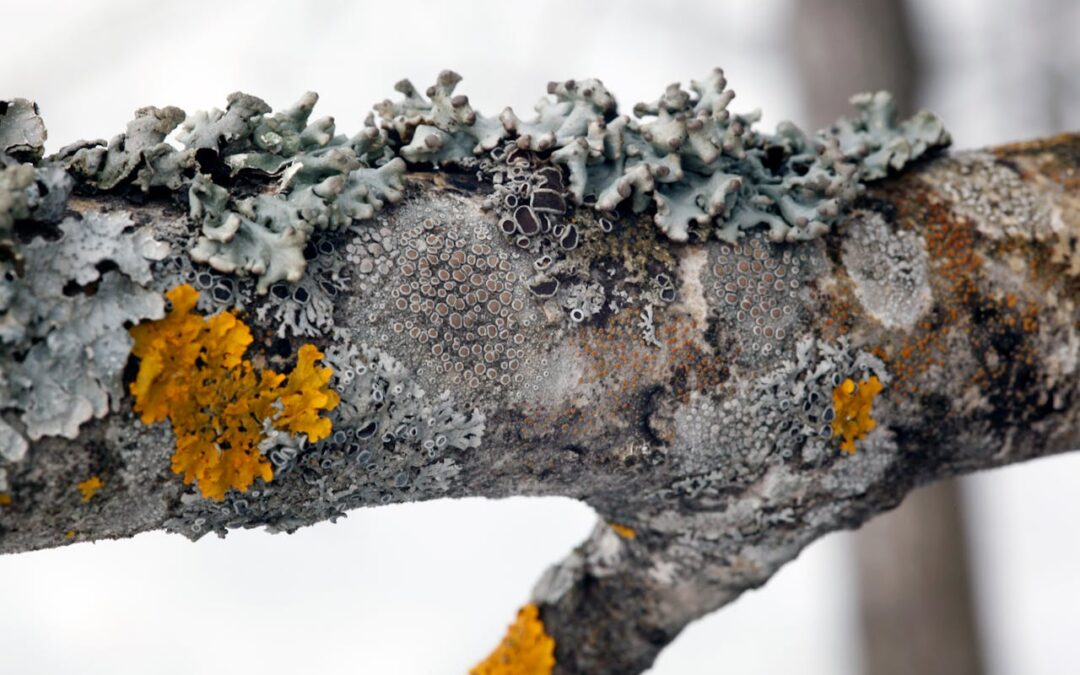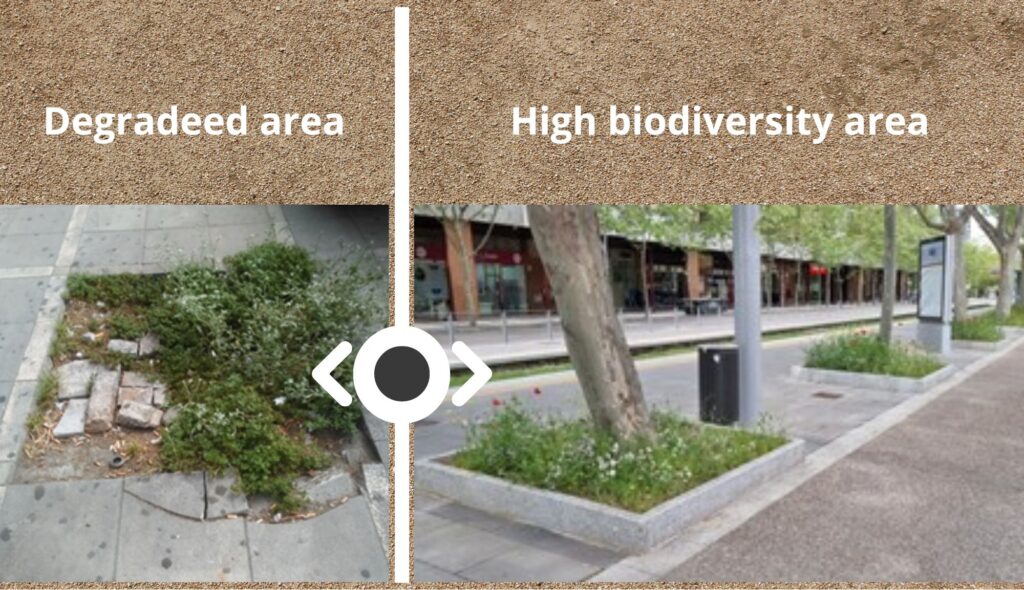
Microorganisms and spontaneous vegetation: natural allies to protect strategic crops and urban environments
In today’s context, agriculture is increasingly affected by the consequences of climate change. Sudden weather variations—such as torrential rains or unusually high temperatures at atypical times of the year—are contributing to the development of resistance among pests and diseases to conventional chemical treatments. For this reason, the search for natural and sustainable solutions has become a priority. In this scenario, beneficial microorganisms and spontaneous vegetation are emerging as key allies in defending both strategic crops and our urban spaces.
Agricultural soils host millions of microorganisms, such as bacteria and fungi (Trichoderma spp., Bacillus, and Pseudomonas), which, either acting on their own or in symbiosis with plants, play a fundamental role in protection against pests and diseases. These microorganisms act in various ways: they compete with pathogens for nutrients and space, produce antimicrobial compounds that inhibit pathogen action, induce plant defense systems, and improve soil nutrition and structure—thus enhancing the resilience of the plants growing there, including ornamental trees in cities.
Likewise, spontaneous vegetation, traditionally considered ‘weeds’, can be a great ally against pathogens if properly managed. These naturally growing plants, fully adapted to their environment, offer a wide range of benefits that should be exploited. They host natural enemies of pests—such as predatory insects and parasitoids—promote the presence of beneficial microorganisms in the rhizosphere (as they already possess their own microbial ecosystem), act as physical or biological barriers against pathogens, and significantly contribute to the functional biodiversity of ecosystems.
Therefore, incorporating these plants becomes essential to understanding the surrounding ecosystem and using it to generate a natural and effective system of defense against the pests and diseases affecting crops.

Interaction between microbiota and spontaneous vegetation
The synergy between both elements is fundamental. Spontaneous vegetation influences the composition of soil microbiota through root exudates and can act as a reservoir for protective microorganisms. Recent studies show that plots with diverse vegetative cover present greater resistance to diseases.
These synergies are being successfully applied in strategic crops such as grapevine, almond, olive, and pistachio, providing resilience and sustainability in the face of adverse climate conditions.
The strategy to ensure this interaction is fully functional and effective involves the identification and inoculation of native microbial consortia—microorganisms fully adapted to the environment and unlikely to be rejected—alongside appropriate management of spontaneous vegetation by creating seed mixes tailored to each crop or context. Moreover, minimizing tillage and maintenance tasks helps reduce energy consumption and our carbon footprint.
Practical applications of spontaneous vegetation in Castilla y León
In Castilla y León, numerous species of spontaneous vegetation have been identified that can be strategically integrated into cultivation systems. Species such as Papaver rhoeas (common poppy), Sinapis arvensis (wild mustard), Plantago lanceolata (ribwort plantain), and Stellaria media (chickweed) are common in dryland areas and field margins. These plants not only compete with invasive species but also provide habitats for beneficial insects and enhance soil biodiversity.
One of the simplest and most practical applications of these natural resources is their implementation in urban areas (Fig. 1), transforming degraded and low-value spaces into high-biodiversity zones that significantly contribute to the human-plant-soil interaction axis.

The selective management of these species, using techniques such as differential mowing or designing vegetative cover strips, is proving agronomically and ecologically beneficial in recent field trials in cereal, grapevine, and olive crops.
Conclusion: nature as an ally for agricultural sustainability
The integration of beneficial microorganisms and spontaneous vegetation represents an effective strategy for a more natural and sustainable agriculture. Promoting these practices not only helps protect strategic crops and urban gardens but also improves soil health, reduces dependency on chemical inputs, and helps control energy consumption. It is time to view the soil and surrounding environment as our true allies in agricultural protection.
Do you want to apply natural solutions to your crops?👉 Discover our escubre nuestros sustainable agri-food projects.
– FAO (2022). *Harnessing the potential of soil biodiversity in agroecosystems*. Food and Agriculture Organization of the United Nations.
– Poveda, J., & González-Andrés, F. (2021). *Biological control of plant diseases through the rhizosphere microorganisms: Emerging strategies and challenges*. Frontiers in Microbiology, 12, 671495.
– European Commission (2020). *Biodiversity Strategy for 2030: Bringing nature back into our lives*.
– Martínez-Hernández, C. et al. (2023). *Vegetation management and soil microbiota interactions in Mediterranean agroecosystems*. Agronomy for Sustainable Development, 43(2).